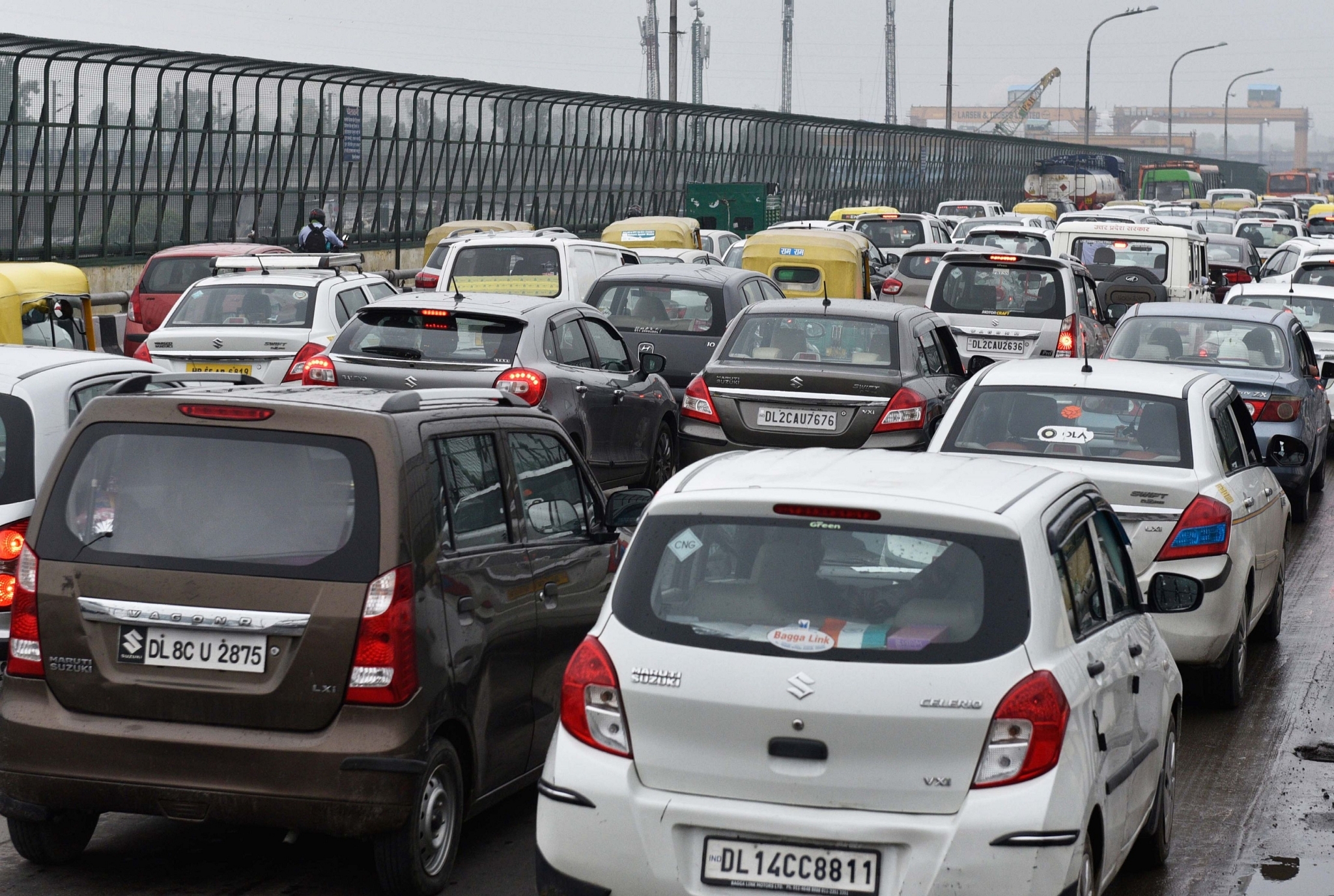Business
Why The Automobile Industry Is About To Choke On Its Own Growth Story
- The Indian automobile industry clearly is living on borrowed time, and it should not take demand for granted in the coming years.

Massive traffic congestion is one reason why people in urban areas are buying less number of vehicles. (Mohd Zakir/Hindustan Times via Getty Images)
Slowly, almost imperceptibly, India’s automobile industry is realising the limits to its growth – at least in urban areas. On Wednesday (21 November), Maruti’s senior executive director (sales and marketing), R S Kalsi, told the media that urban sales growth is down to a trickle (2-3 per cent in this fiscal till October) while rural sales are growing at a faster clip of 12 per cent. Festival sales were a dampener, and rating agency Crisil has lowered its passenger vehicles sales target for this fiscal by 2 per cent to a range of 7-9 per cent.
Maruti’s share prices are a quarter down from their 52-week high of Rs 10,000, and the S&P BSE Auto Index is down by a similar number from its high, when the broader Sensex is down just about 10 per cent from its all-time highs.
Kalsi blamed traffic congestion and a rise in shared mobility (Ola, Uber) in urban areas for this diminution of demand; in fact the trend of prospective buyers ditching purchases of vehicles would have been stronger had state transport regulators been more proactive in promoting shared mobility, and the app-based companies had made fares more realistic where more drivers would be willing to use their services instead of calling for regular strikes.
The truth is that India is choking on its super-fast rate of private transport growth, driven by low taxation and the spectacular failure of public transport in urban areas. In 2017-18, according to the Society of Indian Automobile Manufacturers, Indians bought nearly 25 million vehicles, of which passenger vehicles and two-wheelers accounted for 93 per cent of the total. Taking these and commercial vehicles sold until March 2018, India is estimated to have nearly 275 million passenger, private and commercial vehicles on the road – more than one per household. In 2015, we had only 210 million.
The rate of annual growth – nearly 25 million vehicles sold, including over 20 million two-wheelers last year – is simply unsustainable over the long-term, though replacement demand could kick in over the next few years as pollution laws and regulations to scrap older vehicles are enforced.
A Times of India report today (22 November) says that sales in Mumbai fell 20 per cent, Bengaluru 11 per cent and Chennai 4.5 per cent in 2017-18. This is unlikely to be a short-term blip.
The way forward for public policy is clearly public transport – buses and shared app-based taxis, followed by metros – financed by subsidies realised from higher taxation of cars, and ultimately even two-wheelers.
Already, high petrol and diesel prices, and traffic congestion in metros is strangling demand, but once taxation, including congestion taxes and tolls, rise to higher levels than now, it is difficult to see the automobile industry sustaining its high rates of growth so far.
Two-wheelers, which have seen beneficiaries of very low taxation (they pay practically no tolls, and parking charges in urban areas can largely be evaded), will also face a constriction on demand in the coming years. It is difficult to see 20 million vehicles being sold endlessly as pollution and congestion rise, and taxes keep pace.
The Indian automobile industry – barring commercial vehicles – clearly is living on borrowed time, and it should not take demand for granted in the coming years. Some bounce may be provided by a steady shift to electric vehicles as the infrastructure for it improves, but robust future growth cannot any more be guaranteed.
One can also expect a proportionate rise in shared mobility and app-based taxis, not to speak of app-based two- and three-wheelers. This will shift demand from individuals to fleet and commercial operators, which means pricing has to be more aggressive.
The bottomline is this: industry bottomlines will get thinner and the industry needs to prepare for tougher days over the next decade.
Introducing ElectionsHQ + 50 Ground Reports Project
The 2024 elections might seem easy to guess, but there are some important questions that shouldn't be missed.
Do freebies still sway voters? Do people prioritise infrastructure when voting? How will Punjab vote?
The answers to these questions provide great insights into where we, as a country, are headed in the years to come.
Swarajya is starting a project with an aim to do 50 solid ground stories and a smart commentary service on WhatsApp, a one-of-a-kind. We'd love your support during this election season.
Click below to contribute.
Latest